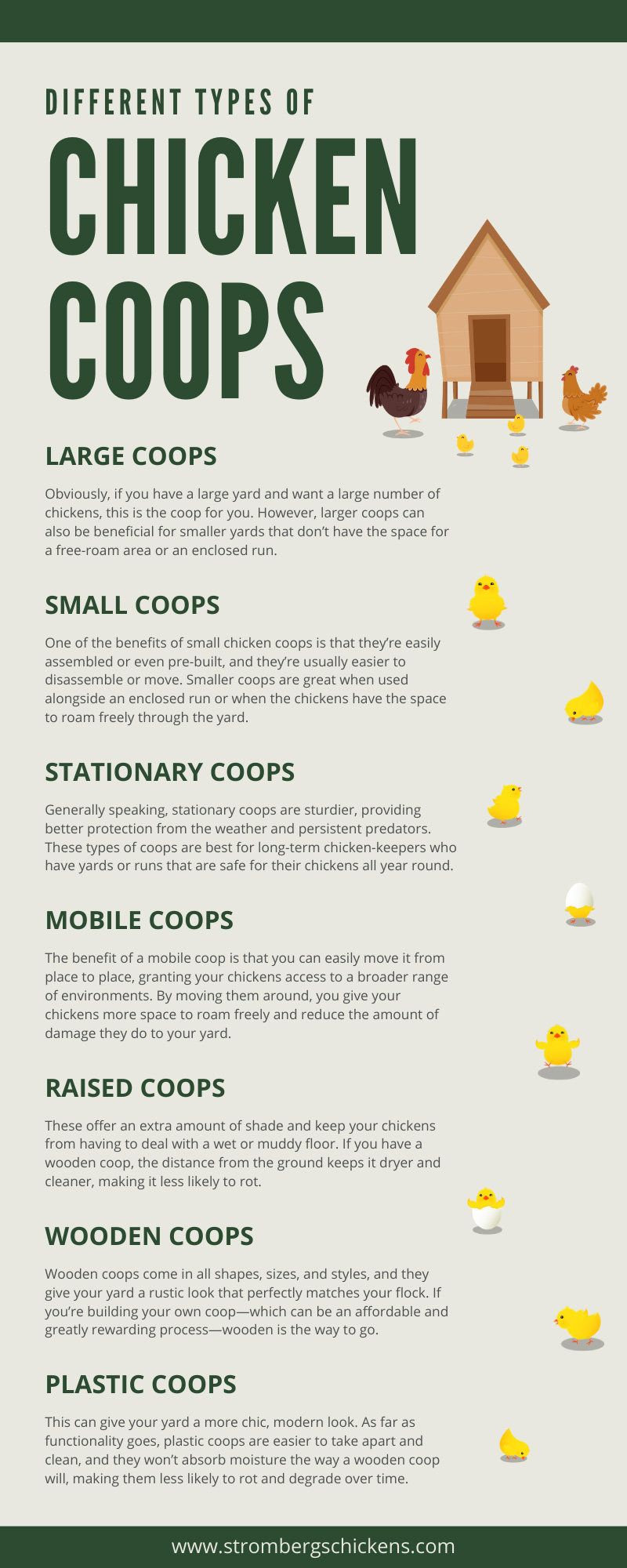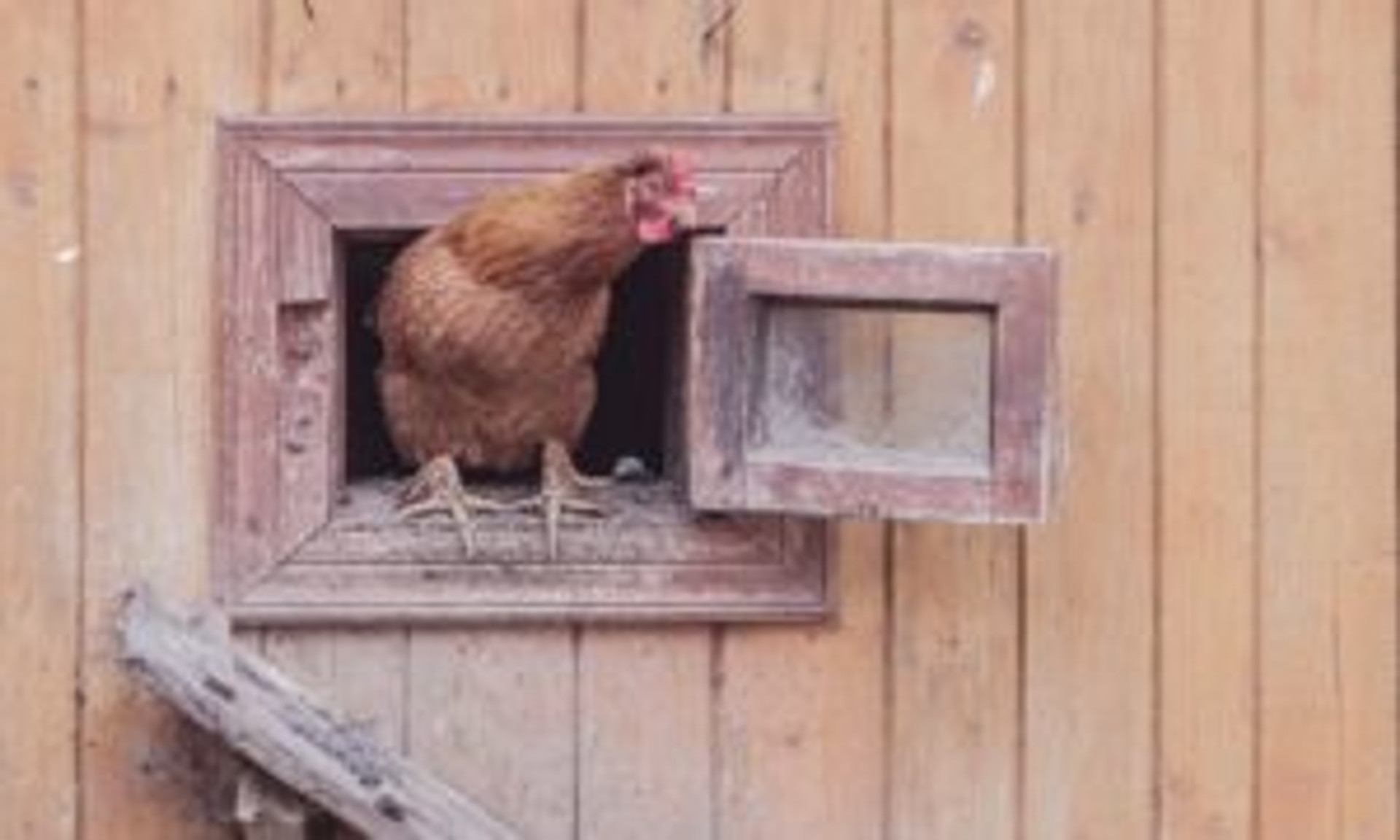Different Types of Chicken Coops
Your chickens’ entire lifestyle is based on the structure they live in. The size of their coop and their access to the outdoors greatly affect how they sleep, feed, and nest. Here’s a guide to some of the different types of chicken coops to help you decide which one best fits the needs of your flock.
What to Consider When Choosing a Coop
Like people, each chicken is different, and each has different needs. There are a lot of factors to consider when you’re deciding which chicken coop is best for your flock. The space you have in your yard, how many chickens you have, and what kind of lifestyle you want for them are all important things to think about.
Will your chickens be free-roaming, or will you always keep them in their coop or run? Are there a lot of predators in the area? You should also look at the local laws and regulations regarding keeping chickens, especially if you live within city limits.
When you’re looking at the different types of chicken coops, you’ll also want to pay attention to these important factors:
Size
Will your coop be big enough for your flock to sleep, eat, drink, and get some exercise?
Mobility
Will your chicken coop stay in the same location, or will you have to move it frequently?
Access
How much outdoor access and freedom do you want your chickens to have for your coop?
Materials
How well will your chicken coop fare against the test of time and weather?
Large Coops
Larger coops are great for larger flocks—or, if you’re just starting, the potential for larger flocks. The pros and cons of this type of chicken coop depend on the amount of space in your yard.
Obviously, if you have a large yard and want a large number of chickens, this is the coop for you. However, larger coops can also be beneficial for smaller yards that don’t have the space for a free-roam area or an enclosed run.
When you’re thinking about the size of your coop, keep in mind how your flock will grow, how much space the chickens will need to move around, and how many nests your hens will need.
Small Coops
For many backyard chicken keepers, their flocks are a side hobby, which means they don’t need or want more than a few birds. This is why a small chicken coop is a good idea—especially for first-timers.
One of the benefits of a small chicken house is that they’re easily assembled or even pre-built, and they’re usually easier to disassemble or move. Smaller coops are great when used alongside an enclosed run or when the chickens have the space to roam freely through the yard.
Even with a bigger flock, small coops make good isolation spots for sick or temperamental chickens.
Stationary Coops
Stationary chicken coops are more permanent, as they aren’t made to be moved. They can be any size you need, and you can even build them from pre-existing structures such as a shed or part of a barn.
Generally speaking, stationary coops are sturdier, providing better protection from the weather and persistent predators. These types of coops are best for long-term chicken keepers who have yards or runs that are safe for their chickens all year round.
Mobile Coops
Mobile, or portable, chicken coops also come in a wide variety of sizes to suit any flock. Some are small enough that you can move them on your own, while larger ones require a tractor or other vehicle to move.
The benefit of a mobile chicken coop is that you can easily move it from place to place, granting your feathered friends access to a broader range of environments. By moving them around, you give your chickens more space to roam freely and reduce the amount of damage they do to your yard.
These types of coops are also great for relocating your chickens to areas that offer better shelter from the weather or local predators. You can also consider a semi-mobile chicken coop, which gives you the best of both types of coops. These are designed so that you can move them, but you can also leave them in place for long periods of time.
Raised Coops
Even with a small flock, chicken coops take up a significant amount of space, so it’s important to make the most of the room you have. Raised coops help you do this by granting extra run space beneath the coop for the chickens to wander and feed.
These offer an extra amount of shade and keep your chickens from having to deal with a wet or muddy floor. If you have a wooden chicken coop, the distance from the ground keeps it dryer and cleaner, making it less likely to rot. Raised coops are also easier to access than ones that rest on the ground, making your job much easier.
Wooden Coops
A wooden chicken coop is a traditional favorite. It has served chicken farmers for hundreds of years. Wooden coops come in all shapes, sizes, and styles, and they give your yard a rustic look that perfectly matches your flock.
If you’re building your own coop—which can be an affordable and greatly rewarding process—wooden is the way to go. Just be sure to buy high-quality materials that will outlast exposure to the elements for years to come.
Plastic Coops
One of the different coop types that are rising in popularity is the plastic coop. This can give your yard a more chic, modern look. As far as functionality goes, plastic chicken coops provide easy cleaning and are simple to take apart.
They won’t absorb moisture the way a wooden coop will, making them less likely to rot and degrade over time. Plastic coops are also more resistant to red mites and other parasite infestations since the material has fewer nooks and crannies for bugs to creep into.
As you can see, there are many different types of chicken coops, each with its own drawbacks and benefits. There’s a perfect coop for you, your yard, and your feathery family.


